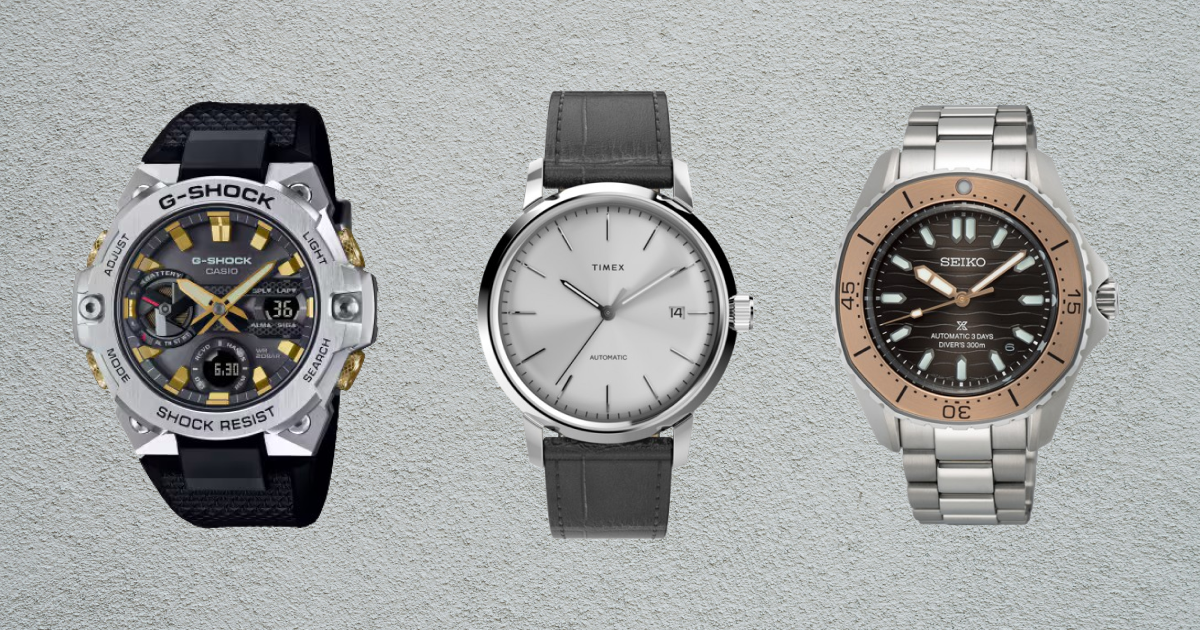
Newsletter Subscribe
Enter your email address below and subscribe to our newsletter

Enter your email address below and subscribe to our newsletter


A watch is not just a timekeeping device; it is also a symbol of style, status, and the personality of the wearer. However, there are several unwritten rules to consider when wearing a watch. These rules may not be found in any manual, but they reflect etiquette, aesthetics, and social impressions. If you are someone who always wears a watch no matter where you go or what event you attend, it is wise to be aware of these rules. Here is a complete list to guide you.
Table of Contents
Typically, a watch is worn on the non-dominant hand. If you are left-handed, wear it on your right wrist, and if you are right-handed, wear it on your left wrist. This practice helps avoid interference with your primary activities, such as writing or working with your dominant hand. Additionally, wearing a watch on the non-dominant hand reduces the risk of scratches or damage caused by frequent use.
A watch that is too large or too small will look disproportionate on your wrist. An oversized case can make your appearance look unbalanced, while a case that is too small might appear less appealing. Choosing the right size ensures both comfort and aesthetic harmony.
Not all watches are suitable for every event. For instance, a formal watch with a leather strap and minimalist design is ideal for formal occasions like weddings or business meetings. Meanwhile, a sporty watch with water-resistant features is better suited for outdoor activities. Choosing a watch that fits the situation reflects your attention to detail and sense of etiquette.
Wearing a fake watch not only projects a negative image but also demonstrates a lack of appreciation for the creativity and innovation of genuine watchmakers. Authentic watches often embody advanced technology and craftsmanship that counterfeit products cannot replicate. Moreover, supporting authentic products means contributing to the sustainability of the horology industry.
A well-maintained watch reflects a personality that values attention to detail. Regular cleaning, replacing worn straps, and fixing scratched glass are some steps to keep your watch looking fresh and functioning well. The appearance of your watch can leave a strong first impression on others.
The thickness of a watch should match your attire. A watch with a thick case might feel uncomfortable when paired with long-sleeved shirts or suits, as it can cause the fabric to bulge. On the other hand, a watch with a slim case slides more easily under your sleeve, offering a neater and more comfortable appearance.
Refrain from wearing too many bracelets or accessories on the same wrist as your watch. This can make your look appear cluttered and distract from the watch itself. An elegant watch will stand out more when worn without competing accessories around it.
Unless your watch is specifically designed for such conditions (like a diver’s watch), avoid wearing it in extreme temperatures or underwater. Hot steam in a sauna can damage the watch’s sealant, while chlorine in a swimming pool can cause corrosion on metal components. Understanding your watch’s limits is the best way to ensure its longevity.
Every watch has its own story and value. A luxury watch may boast a rich history and advanced technology, while a simpler watch might hold deep sentimental value. Avoid belittling others’ choices, as everyone has their own reasons for selecting a particular watch.
Modern watches often come with various features like a chronograph, GMT, or altimeter. Utilizing these features appropriately demonstrates your understanding and appreciation of the technology behind them. Conversely, using functions you don’t need may seem inefficient and detract from the essence of the watch.
Constantly glancing at your watch, especially during meetings or conversations, can be seen as impolite and may make others feel undervalued. This behavior can give the impression that you are impatient or eager to end the interaction. Use your watch wisely to avoid such misunderstandings.
Some mechanical watches are designed with mechanisms that are particularly sensitive during specific times, usually between 9 PM and 3 AM. Adjusting the watch during this period can damage the gears or disrupt the calendar function. To prevent any damage, ensure you understand your watch’s user manual and guidelines.
When not in use, keep your watch in a safe place, such as a dedicated storage box. This not only protects the watch from dust and scratches but also helps maintain its internal mechanisms in good condition. Storing your watch in a stable environment can significantly extend its lifespan.
Each type of watch has a unique design and purpose. Dress watches typically feature a minimalist and elegant design, making them suitable for formal occasions. Diver watches are water-resistant and designed for underwater activities. Pilot watches often have large dials for easy readability. Understanding these differences helps you choose a watch that matches your needs and style.
Ultimately, a watch is a reflection of your personal style. Don’t hesitate to choose a watch that represents your character, whether through its color, design, or features. Selecting a watch that aligns with your personality will make you feel more confident when wearing it.
Wearing a watch properly not only enhances your appearance but also reflects your personality and respect for time. By understanding and following these unwritten rules, you can become not only a wise watch wearer but also someone who appreciates the art and culture behind the world of horology.
May this guide help you exude confidence and elegance on every occasion. Feel free to leave a comment if you have any additional thoughts.